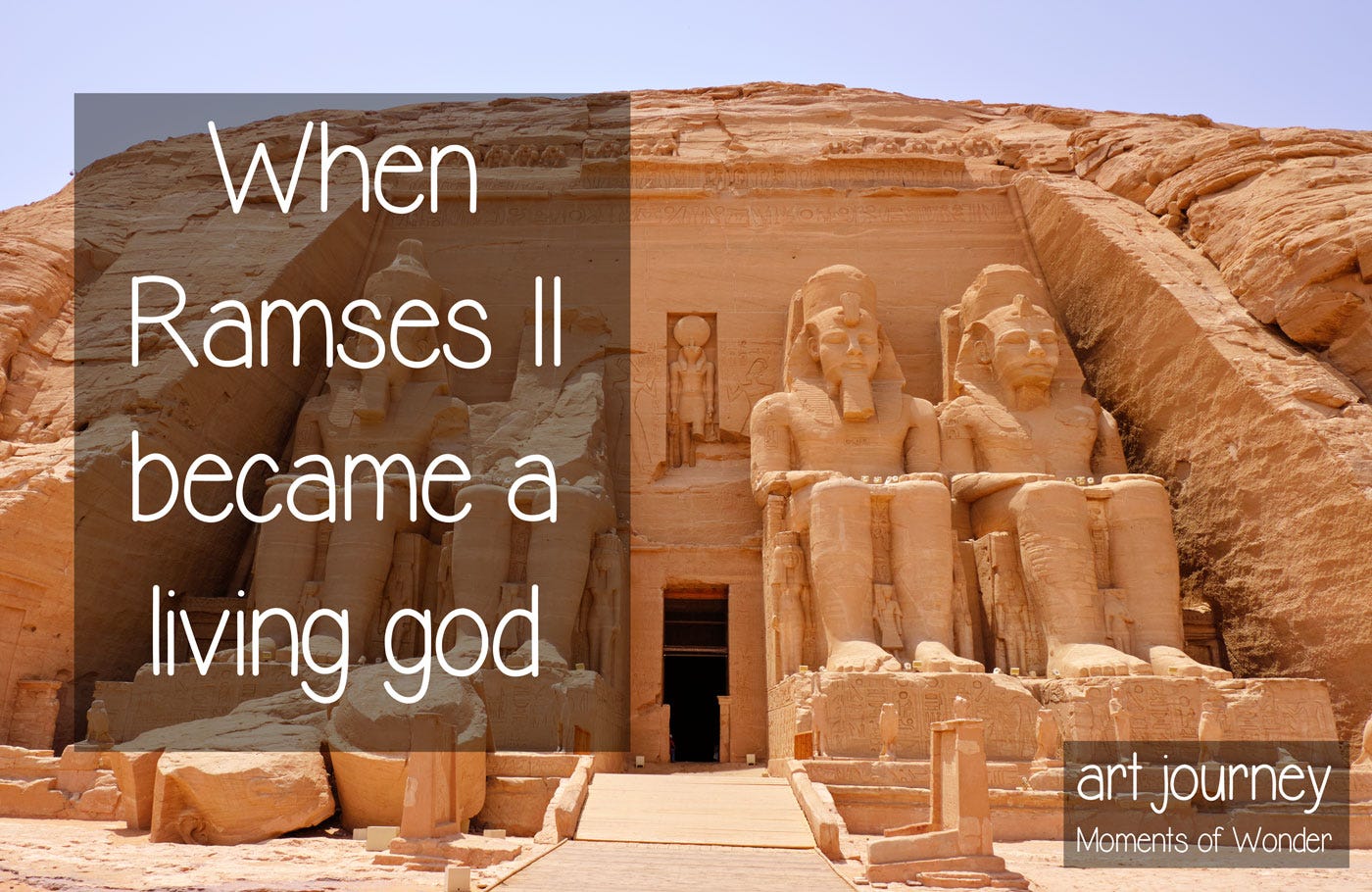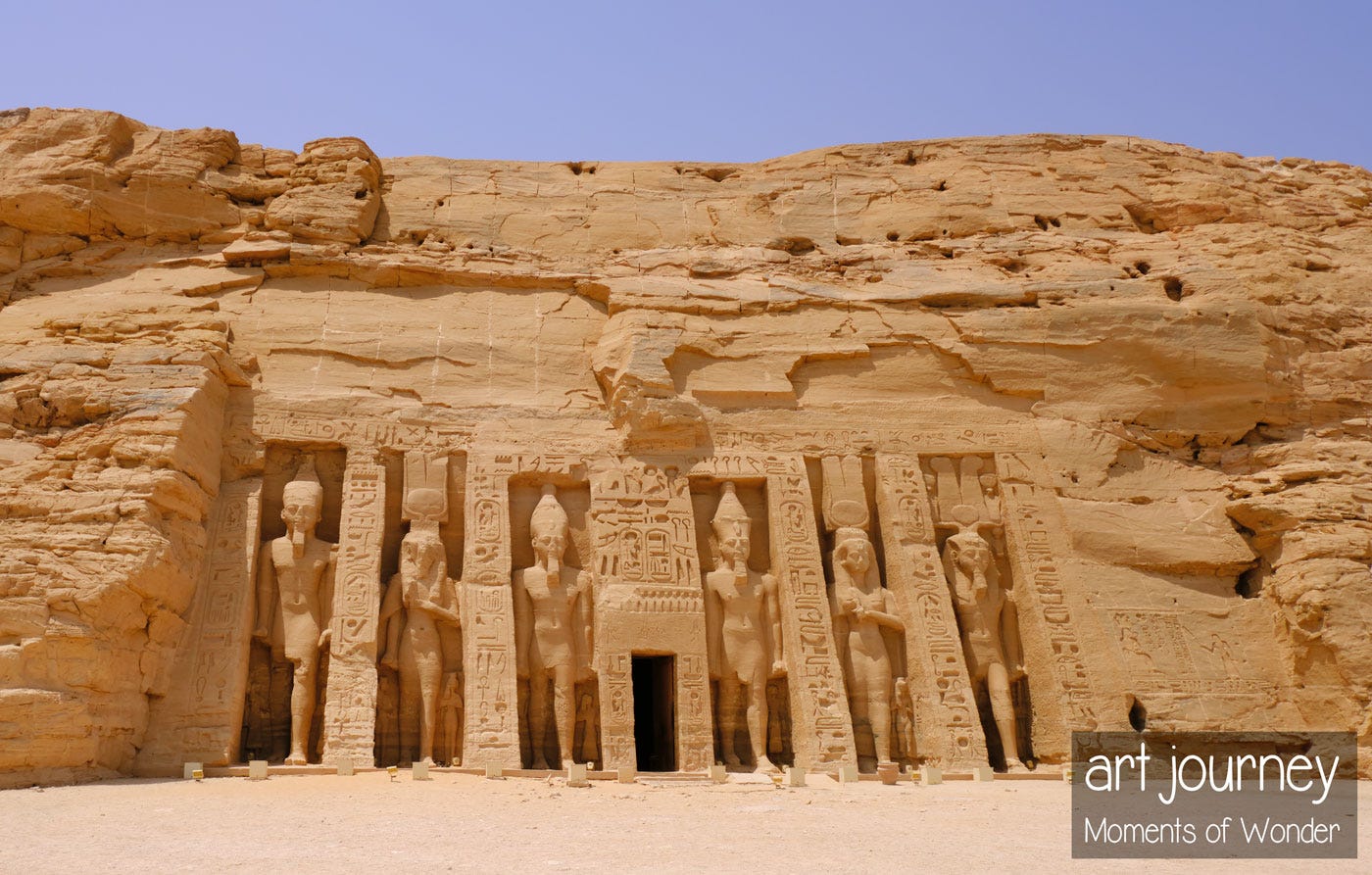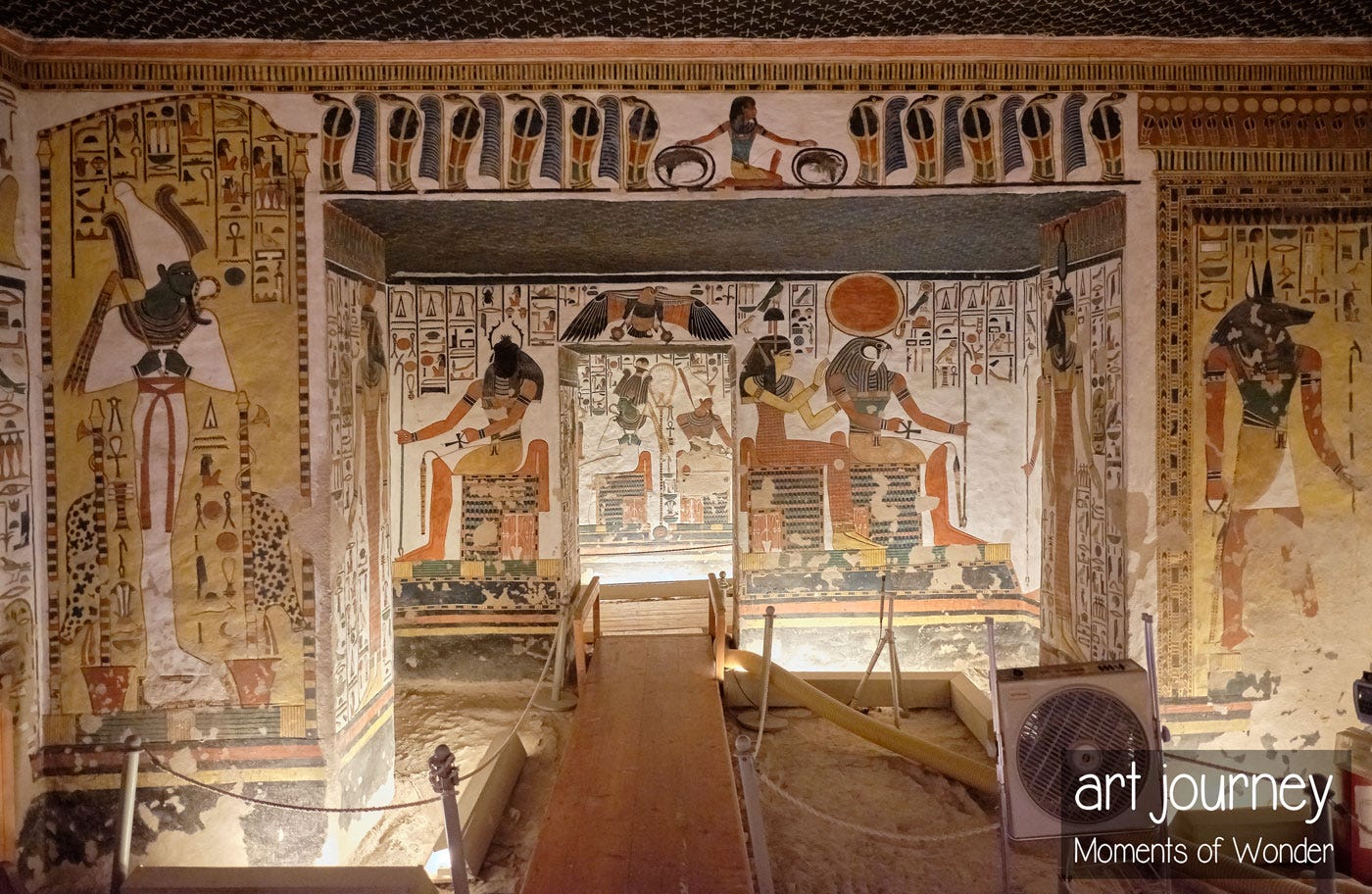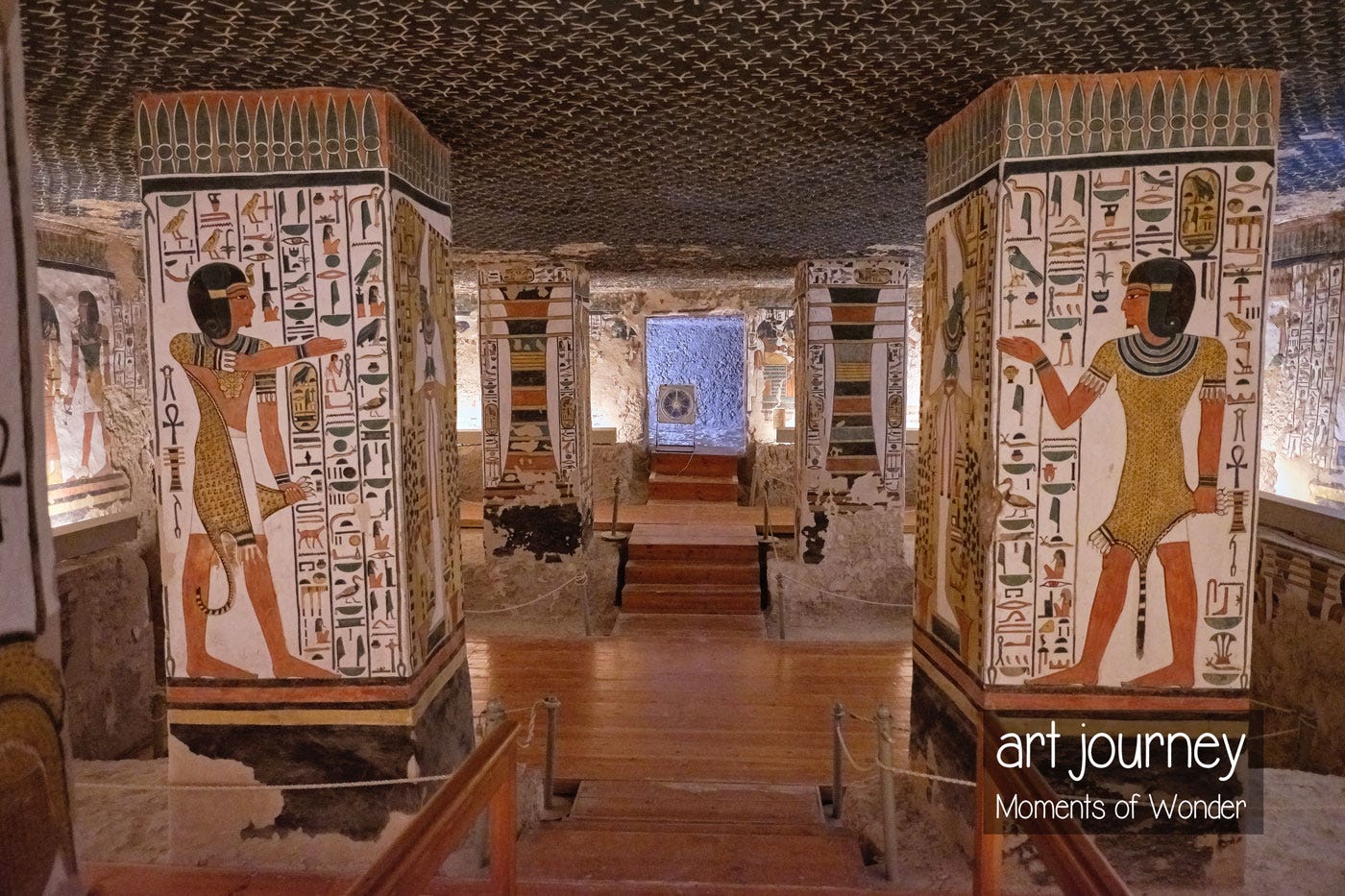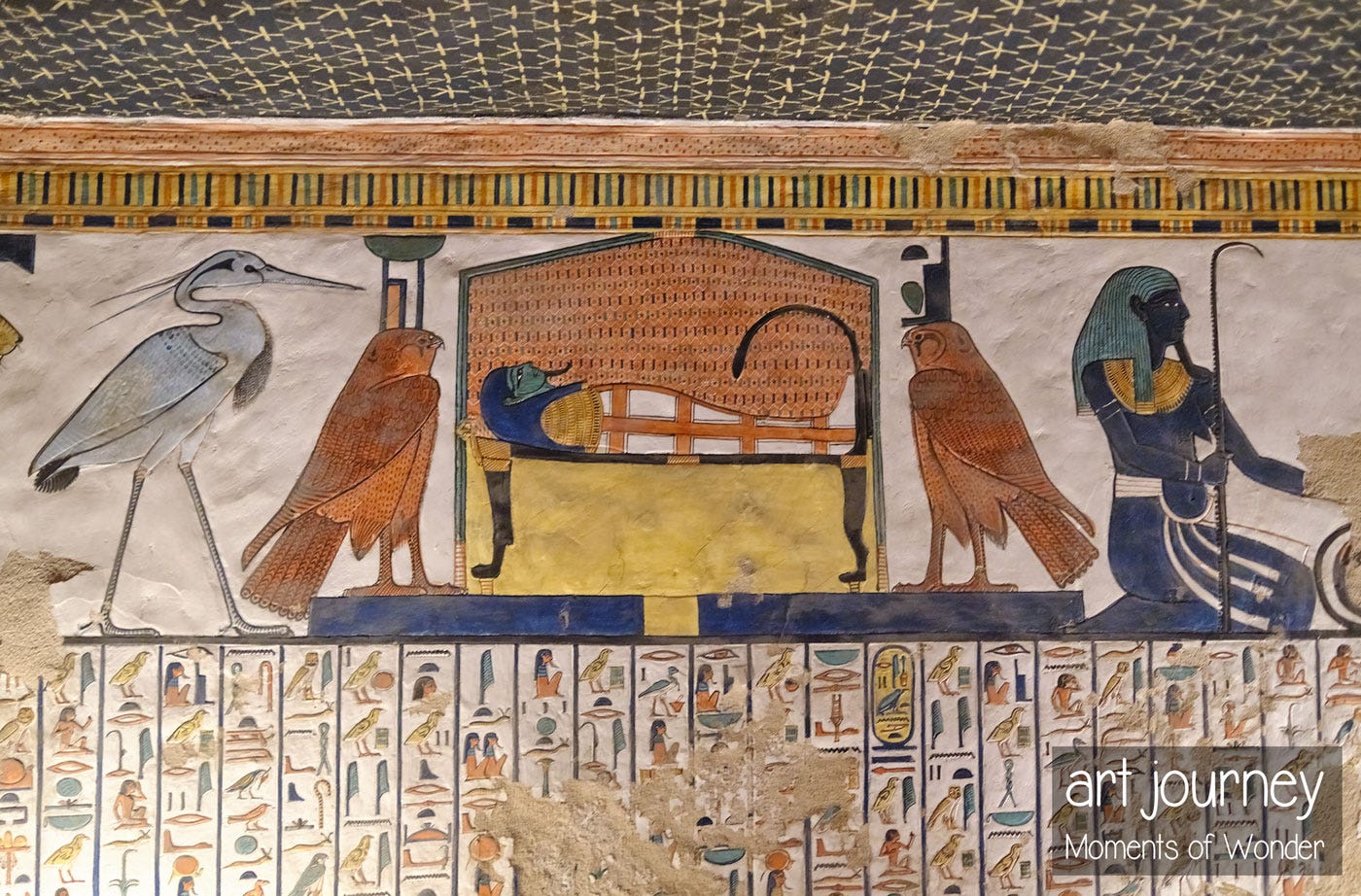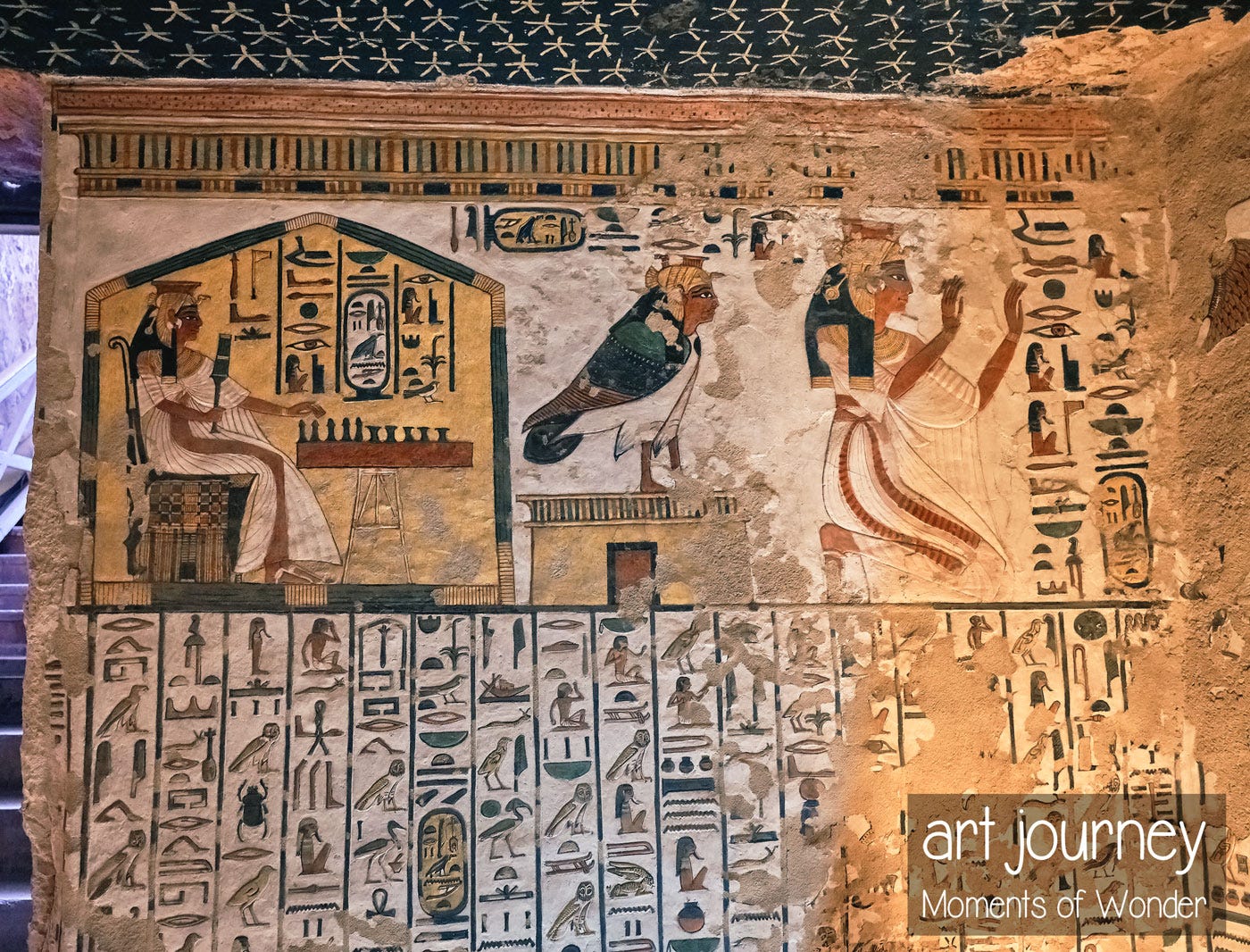This story follows "Ramses' love letter to Nefertari".
Over the three millennia of Pharaonic civilization, there were over 300 Kings. Ramses became the Paraoh of superlatives, the greatest builder in ancient Egypt.
Regarding the most impressive royal tomb, Ramses' father, Sethi—the subject of a future story—easily wins the contest.
As to King's wives—Queens—the number is far too high even to count. We will instead wonder how one Queen differs from all others.
Here, we appreciate Ramses' journey from being born an unknown commoner to becoming a living god, which was done with Nefertari at his side.
Fasten your seatbelts; we're flying to Luxor and Abu Simbel.
Ramses' meteoric rise toward the sun

You have probably heard of the sun's rays' effect on Abu Simbel, but most Egyptian temples are aligned with the sun or the stars.
It bears repeating that Ramses was born a commoner into a military family. At around five years of age, he saw his grandfather being gifted the crown of Egypt.
His father, Sethi, who had spent most of his life on a charioteer's career path, was the first to dream big and ensure his son would be Great.
He made the boy, aged 10, Head of the Army. A few years later, he chose wives for him, one of whom was Nefertari.
The photo below shows why Abu Simbel is a milestone. You may know already that inside, there are four seated gods, one of whom is Ramses himself.
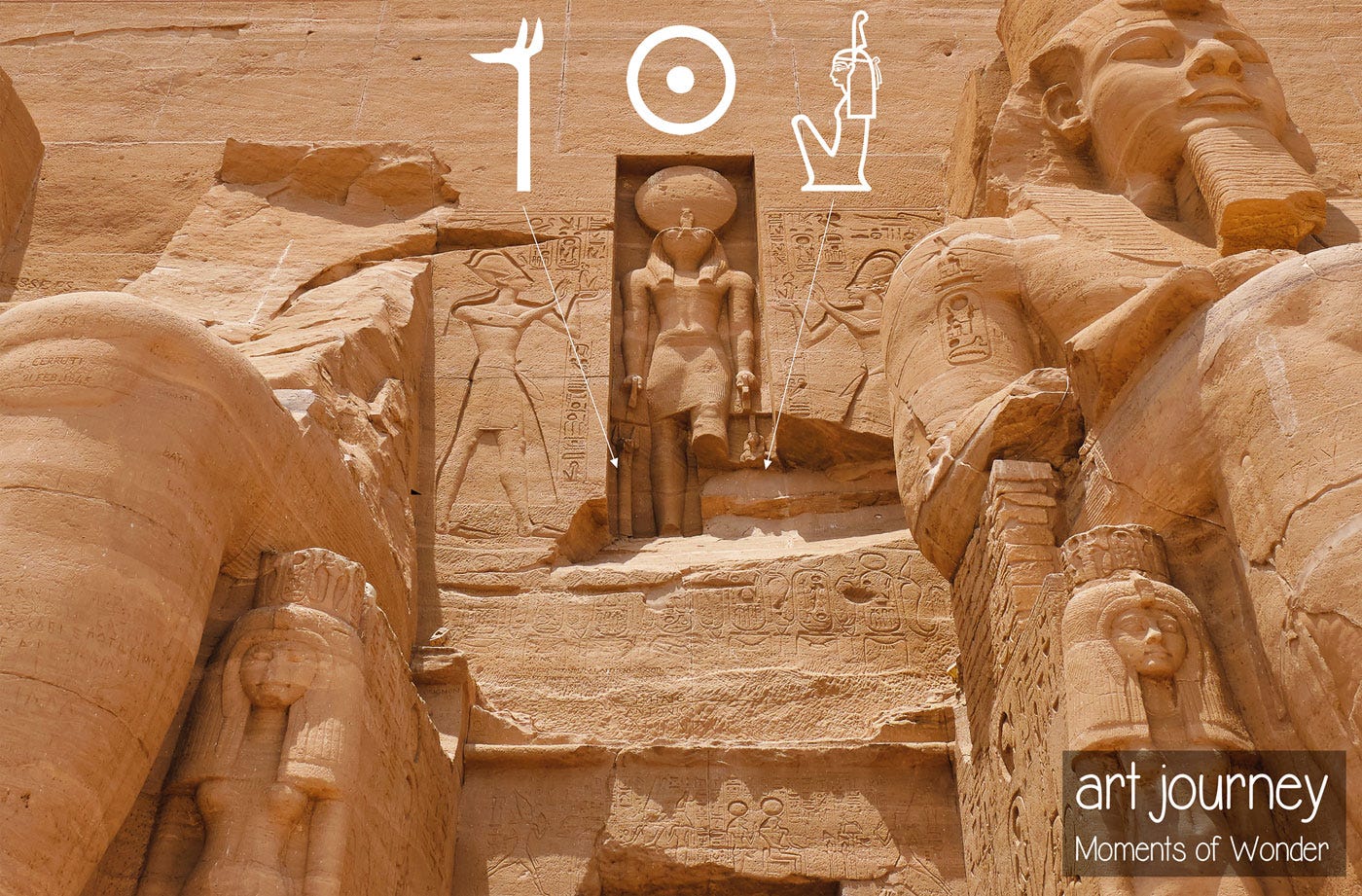
But before you enter, you see above the door the god Ra-Horakhty, worshipped by Ramses. The god holds hieroglyphs, meaning the image reads User-Maat-Re, Ramses's throne name.
In other words, it shows a King called Ramses worshipping a god called Ramses.
That's the meteoric rise: Ramses started as a child in the shadows, saw his grandfather crowned, became Prince, then Pharaoh, and worshipped, in his own lifetime, as a god.
That is what makes Abu Simbel unique: it embodies the moment Ramses became a living god.
And who was beside Ramses when he skyrocketed from an anonymous boy to a living god?
You guessed it, the Great Wife, The Most Beautiful Among Them, Nefertari.
For Whom The Sun Shines temple at Abu Simbel
Have you ever seen a temple explicitly dedicated to a Queen? Or one where she is depicted at the same size as her husband's?
In the first part of this article, there is a promise to explain the actual love letter. Here it is:

On the second pillar of Nefertari's temple—the damaged section—we can still read:
The Great King's Wife
Nefertari Meryt Mut,
for whom the sun shines out of love for her,
given life.
For 'Whom the Sun Shines' is also the temple's name.
The second inscription is at the door of her tomb in the Queen's Valley. Here is what it says:
Hereditary noblewoman; great of favors;
Possessor of charm, sweetness and love;
Mistress of Upper and Lower Egypt; the Osiris;
The Great King's Wife, Mistress of the Two Lands,
Nefertari, beloved of Mut, revered before Osiris.
Here's the actual love poem: 'For Whom the Sun Shines' and 'Possessor of Charm, Sweetness and Love'. And there's more.
Nefertari's tomb
To understand, you must forget the thousands of times you heard the words 'death' and 'tomb' applied to ancient Egypt.
And remember that the so-called Book of the Dead is not about death, as it is the Book of Coming Out to the Light.
Nefertari was laid in a house of eternity, where, mummified, she entered the underworld, was resurrected, and came out of the darkness, alive, to the light—the sun, who is reborn every morning.
In other words, every image and hieroglyph ensures she will live forever.
Before you feast on the photos of Nefertari's tomb below, understand its rarity: Although the Queen's Valley—the Place of Beauty—may have nearly 100 tombs, only one is as large, intact, and high-quality as Nefertari's.
Rather than writing about the artistic quality of the paintings, I will let the photos do the talking—the ones where I wasn't shaking in awe—.
Nefertari, the woman behind the great man
In the first part of this article, I explained that the harsh reality is that we know close to nothing about Ramses' actual feelings for Nefertari. He had a long life, one hundred children, and many wives.
Nefertari was not even his only Great Wife. The odds that Ramses ever wrote a love letter to her are very slim.
Drum roll: Ramses' love declaration was not done with pen and paper.
Ramses had his name inscribed all over Egypt and had 50 colossal statues of himself carved. One weighed 1,000 tons and probably was the largest statue in the ancient world. His ego was about the size of the Great Pyramid.
Now, consider the place he gave to Nefertari.
He built for her a colossal temple at Abu Simbel, a temple in the Ramesseum, and had the best painters and artisans design her tomb.
That is Ramses sharing the stage with Nefertari, acknowledging that there was a woman behind the great man. Coming from him, that is as great a love declaration as can be.
Realizing that is a real Moment of Wonder.
This little virtual trip illustrates the private tours of Egypt that I organize with my Egyptian friends.
To get an idea of what it feels like, here's feedback:
Guillaume, Saber and Saleem did a professional and wonderful job from pick up at airport to drop off at cruise, their knowledge on the ground of the history and what we experienced was paramount and the local knowledge of when and where to be to avoid crowds invaluable in the seamless planning and experience.
I am so impressed with this group I already have 2 or 3 close friends and family I will be meeting in coming weeks wanting to know what our trip was like and to do the same, I think the personalised service and the planning was excellent.
Thank you all was a wonderful experience and hope to be back. Can not speak more highly of this group.
I had very high expectations due to the time spent planning the trip and overall cost and will state that both Jane and my expectations where not only met but surpassed.
Again cannot say enough great things about something I waited so long to do and sometimes in these situations your expectations are not met because you have had so much time dreaming, again my expectations met and exceeded, worth every cent and the most disappointing part was flying home.
Find out more online: Art Journey Egypt
QV66 - A fragile wonder
Around 100 years after her burial, thieves looted and smashed their way through the tomb, leaving only Nefertari's knees.
It is a miracle that the tomb's plastered walls have survived. As the average annual rainfall in Luxor is zero, it may be hard to imagine that rain destroyed many royal tombs.
Ramses' own tomb is badly damaged. And if it is not torrential rain, it is humidity.
Do consider the problem: a dry and brittle rock gets carved, then plastered and painted over. Humidity seeps through limestone walls which are full of salt crystals. Add to this humidity brought by visitors' breath, and plaster fragments fall off.
From 1986 to 1992, the Getty Conservation Institute did a fantastic job preserving the tomb.
If anyone ever implies it has been repainted, the chief restorer stated:
Our goal was to stop deterioration and consolidate what was possible. We did not add color. Nothing. It was cleaning, consolidation, and stop.
Since then, it has been possible to visit, but it is limited to 10 minutes. However, the tomb has been closed last year.
It is paramount to preserve this preserve for future generations, so we need to wait for conservation efforts on the tomb of Nefertari.
But there are several wonders, possibly painted by the same artists, that one can discover:
- the tomb of Sethi I.
- some of the artisans' tombs in Deir el-Medina.
- the breathtaking temple of Abydos.
More reading about Nefertari's tomb
https://www.getty.edu/conservation/publications_resources/pdf_publications/house_eternity.html
https://thebanmappingproject.com/tombs/qv-66-queen-nefertari-merymut
https://www.nefertaritomb.com/conservation-warning
https://www.thecollector.com/why-ramses-ii-is-known-as-ramses-the-great/





